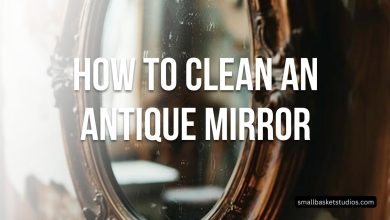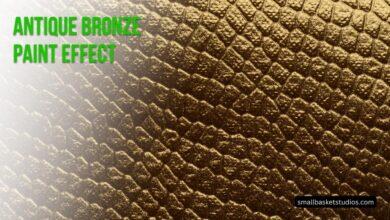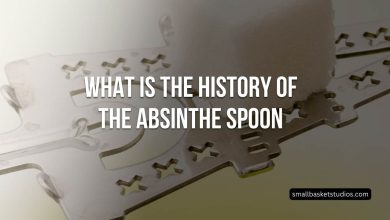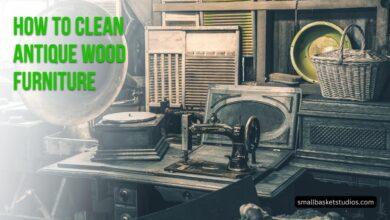Antique Mourning Rings
In the realm of historical jewelry, few pieces capture the essence of human emotion and the passage of time quite like antique mourning rings. These small, often intricate artifacts serve as poignant reminders of loved ones lost and the enduring nature of memory. As we delve into the world of these fascinating relics, we’ll explore their origins, evolution, and the cultural significance they held for generations past. From the somber elegance of Georgian-era designs to the ornate complexity of Victorian mourning jewelry, these rings tell a story of love, loss, and remembrance that continues to captivate collectors and historians alike.
The Origins of Mourning Rings
Ancient Roots of Commemorative Jewelry
The concept of wearing jewelry to commemorate the deceased is not unique to the modern era. In fact, this practice has roots that stretch back to ancient civilizations.
Early Examples
- Ancient Egypt: Egyptians wore amulets and scarabs to protect the deceased in the afterlife.
- Roman Empire: Romans exchanged rings with death masks as memento mori (reminders of mortality).
Medieval Precursors
During the Middle Ages, the practice of creating and wearing memorial jewelry began to take shape in a form more recognizable to us today.
Notable Developments
- 15th Century: Emergence of “memento mori” jewelry, often featuring skulls or other symbols of death.
- 16th Century: Introduction of rings with inscriptions commemorating the deceased.
The Rise of Mourning Rings in Europe
17th Century: Formalization of Mourning Customs
The 17th century saw a significant shift in how European society approached death and remembrance, particularly among the upper classes.
Key Factors
- Increasing wealth: The growing middle class could afford luxuries like personalized jewelry.
- Religious influence: Protestant Reformation emphasized personal relationships with the deceased.
- Royal example: Monarchs began distributing mourning rings at funerals.
18th Century: The Georgian Era
The Georgian period (1714-1837) marked a golden age for mourning rings, with distinct styles and conventions emerging.
Characteristics of Georgian Mourning Rings
| Feature | Description |
|---|---|
| Materials | Gold, enamel, crystal |
| Symbols | Urns, willows, skulls |
| Inscriptions | Name, date, age of deceased |
| Hair work | Incorporation of the deceased’s hair |
Notable Examples
- Stuart Crystal Rings: Featured faceted crystal covering a gold wire cipher or hair arrangement.
- Rococo-style Rings: Elaborate designs with scrollwork and floral motifs.
Victorian Era: The Pinnacle of Mourning Jewelry
Queen Victoria’s Influence
The death of Prince Albert in 1861 plunged Queen Victoria into deep mourning, significantly impacting societal norms around death and remembrance.
The Queen’s Example
- Wore black for the remainder of her life
- Commissioned numerous pieces of mourning jewelry
- Popularized jet and black onyx in mourning attire
Stages of Victorian Mourning Jewelry
Victorian mourning customs were highly codified, with jewelry reflecting different stages of grief.
Deep Mourning
- Duration: First 1-2 years after loss
- Materials: Jet, black onyx, dark enamel
- Styles: Simple, somber designs
Second Mourning
- Duration: Following 9-12 months
- Materials: Introduction of pearls, amethysts
- Styles: More elaborate designs, inclusion of hair work
Half Mourning
- Duration: Final 6 months of mourning period
- Materials: Gold, diamonds, colored stones
- Styles: Return to more ornate and colorful designs
Symbolism in Victorian Mourning Rings
Victorian mourning rings were rich in symbolism, with each element carefully chosen to convey meaning.
Common Symbols and Their Meanings
| Symbol | Meaning |
|---|---|
| Anchor | Hope |
| Broken column | Life cut short |
| Butterfly | Resurrection |
| Forget-me-not | Remembrance |
| Ivy | Fidelity and eternal life |
| Lily | Purity of the departed soul |
Craftsmanship and Techniques
Materials Used in Antique Mourning Rings
The choice of materials in mourning rings was not only aesthetic but also symbolic.
Popular Materials
- Gold: Symbolizing eternity and purity
- Jet: A fossilized wood, prized for its deep black color
- Enamel: Used to create intricate designs and inscriptions
- Hair: Often woven into intricate patterns or used as a background
Techniques in Mourning Ring Creation
Antique mourning rings showcase a variety of specialized jewelry-making techniques.
Notable Techniques
- Enameling: Creating durable, colorful designs
- Hair work: Weaving or braiding hair into intricate patterns
- Miniature painting: Creating detailed portraits on small surfaces
- Engraving: Adding personalized inscriptions and designs
Collecting and Valuing Antique Mourning Rings
Factors Affecting Value
The value of antique mourning rings can vary widely based on several factors.
Key Considerations
- Age: Generally, older rings are more valuable
- Condition: Well-preserved pieces command higher prices
- Provenance: Rings with documented history or famous associations are prized
- Rarity: Unusual designs or materials increase value
- Craftsmanship: Finely made pieces are more desirable
Tips for Collectors
For those interested in starting or expanding a collection of antique mourning rings, consider the following advice:
- Research extensively: Familiarize yourself with styles, periods, and makers
- Buy from reputable dealers: Ensure authenticity and fair pricing
- Examine pieces carefully: Look for signs of repair or alteration
- Consider the story: Sometimes the history behind a piece adds significant value
- Start with more common pieces: Build knowledge before investing in rare examples
The Legacy of Mourning Rings in Modern Times
Contemporary Interpretations
While the Victorian era of elaborate mourning jewelry has passed, the concept of memorial rings continues to evolve.
Modern Approaches
- Cremation jewelry: Incorporating ashes into rings
- Digital memorials: QR codes linking to online tributes
- Eco-friendly options: Biodegradable materials and designs
Cultural Impact and Artistic Influence
Antique mourning rings continue to fascinate and inspire.
Areas of Influence
- Fashion: Revival of Gothic and Victorian-inspired jewelry
- Literature: Featured in historical fiction and mystery novels
- Art: Inspiration for contemporary jewelry designers and artists
Preserving and Caring for Antique Mourning Rings
Conservation Challenges
Antique mourning rings often contain delicate materials that require special care.
Common Issues
- Enamel damage: Chipping or cracking
- Hair deterioration: Fading or brittleness
- Metal corrosion: Particularly in lower-karat gold alloys
Care Guidelines
To protect these historical treasures, follow these care instructions:
- Store separately: Prevent scratching from other jewelry
- Avoid water exposure: Protect enamel and hair components
- Clean gently: Use soft brushes and mild solutions when necessary
- Consult experts: Seek professional advice for repairs or restoration
FAQ: Antique Mourning Rings
Q: How can I tell if a mourning ring is authentic?
A: Look for signs of age, such as wear consistent with the purported period, and examine the craftsmanship. Consult with experts or reputable dealers for authentication.
Q: Are antique mourning rings valuable?
A: While value varies, many antique mourning rings are indeed valuable, especially those from the Georgian and Victorian eras. Factors like age, condition, and provenance affect value.
Q: Can I wear an antique mourning ring?
A: Yes, but with caution. These rings are often delicate and may require special care. Consider having a jeweler examine it first to ensure it can withstand regular wear.
Q: How should I clean my antique mourning ring?
A: Clean very gently with a soft brush and mild soap if necessary. Avoid harsh chemicals and ultrasonic cleaners. When in doubt, consult a professional.
Q: Where can I find antique mourning rings for sale?
A: Reputable antique jewelry dealers, auction houses, and specialized online marketplaces are good sources. Always verify authenticity and ask for provenance when possible.
Conclusion
Antique mourning rings stand as silent witnesses to centuries of love, loss, and remembrance. These small yet powerful artifacts offer us a window into the hearts and minds of those who came before us, revealing how they grappled with grief and sought to keep the memory of loved ones alive. From the somber elegance of Georgian designs to the elaborate symbolism of Victorian pieces, each ring tells a unique story of human connection that transcends time.
As we’ve explored the rich history, intricate craftsmanship, and enduring legacy of these remarkable pieces of jewelry, we’re reminded of the universal human experience of loss and the timeless desire to honor those we’ve lost. In our modern world, where traditions around death and mourning continue to evolve, antique mourning rings serve not only as collectibles but as poignant reminders of our shared humanity and the enduring power of memory.
Whether you’re a collector, a historian, or simply someone fascinated by the ways in which people have expressed love and grief through the ages, antique mourning rings offer a tangible connection to our emotional past. They challenge us to consider how we remember and honor our own loved ones, and what legacies we might leave behind. In the end, these small circles of gold and enamel, often adorned with the very essence of the departed, remind us that while life is fleeting, love and memory can indeed be eternal.



